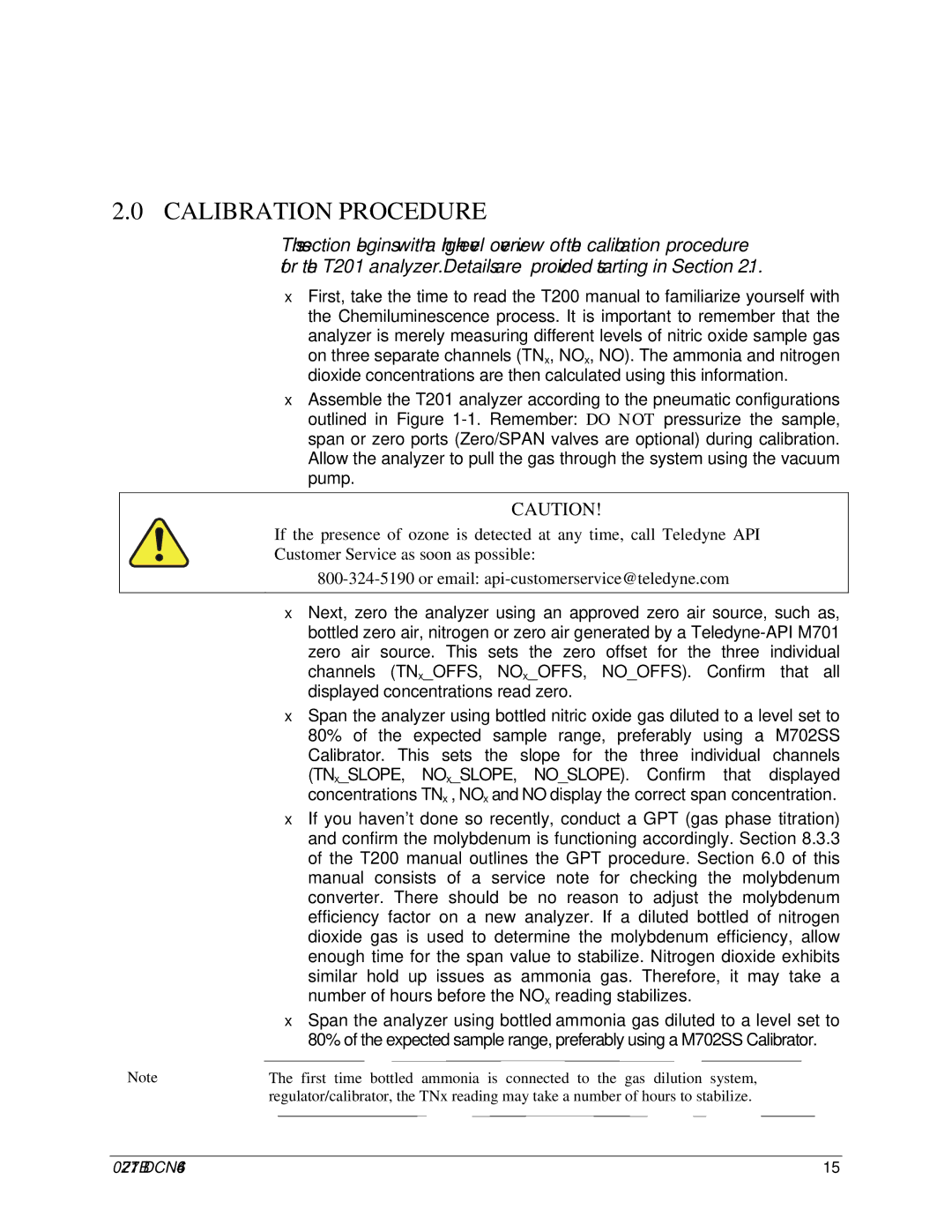
2.0 CALIBRATION PROCEDURE
This section begins with a
First, take the time to read the T200 manual to familiarize yourself with the Chemiluminescence process. It is important to remember that the analyzer is merely measuring different levels of nitric oxide sample gas on three separate channels (TNx, NOx, NO). The ammonia and nitrogen dioxide concentrations are then calculated using this information.
Assemble the T201 analyzer according to the pneumatic configurations outlined in Figure
CAUTION!
If the presence of ozone is detected at any time, call Teledyne API Customer Service as soon as possible:
Next, zero the analyzer using an approved zero air source, such as, bottled zero air, nitrogen or zero air generated by a
Span the analyzer using bottled nitric oxide gas diluted to a level set to 80% of the expected sample range, preferably using a M702SS Calibrator. This sets the slope for the three individual channels (TNx_SLOPE, NOx_SLOPE, NO_SLOPE). Confirm that displayed concentrations TNx , NOx and NO display the correct span concentration.
If you haven’t done so recently, conduct a GPT (gas phase titration) and confirm the molybdenum is functioning accordingly. Section 8.3.3 of the T200 manual outlines the GPT procedure. Section 6.0 of this manual consists of a service note for checking the molybdenum converter. There should be no reason to adjust the molybdenum efficiency factor on a new analyzer. If a diluted bottled of nitrogen dioxide gas is used to determine the molybdenum efficiency, allow enough time for the span value to stabilize. Nitrogen dioxide exhibits similar hold up issues as ammonia gas. Therefore, it may take a number of hours before the NOx reading stabilizes.
Span the analyzer using bottled ammonia gas diluted to a level set to 80% of the expected sample range, preferably using a M702SS Calibrator.
Note | The first time bottled ammonia is connected to the gas dilution system, |
| regulator/calibrator, the TNx reading may take a number of hours to stabilize. |
|
|
07271B DCN6646 | 15 |
